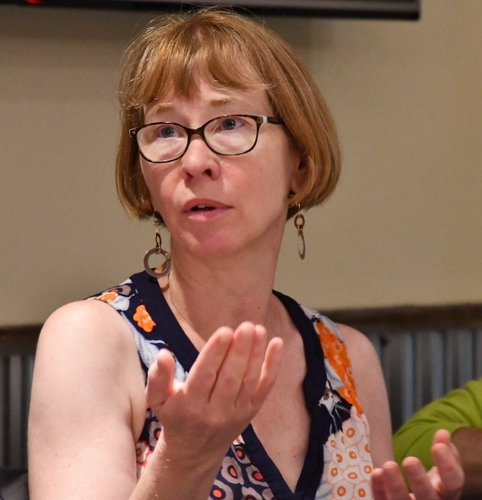BRATTLEBORO — Rural broadband service was a hot topic in the Vermont Legislature this session, and the work of members of the Windham County delegation was key to the passage of the rural broadband bill signed into law last month by Gov. Phil Scott.
The law is designed to help communities independently determine the connectivity solutions that are most appropriate for their respective needs, and it also provides financing of programs to get local initiatives off the ground.
Now, lawmakers are taking the next step: working with the Vermont Department of Public Service and the Windham Regional Commission to make faster, more reliable internet service a reality in chronically unserved and underserved towns.
According to state Rep. Sara Coffey, D-Guilford, a group of county lawmakers met with Windham Regional Commission Executive Director Chris Campany and Brattleboro Development Credit Corp.'s Adam Grinold “to talk about how we could work together to help some of our smaller communities in Windham County address the rural broadband challenge.”
“We know that access to broadband is essential to economic development, education, public safety, and civic engagement,” declared a July 11 news release by the Windham County legislative delegation. “However, existing internet companies do not provide adequate service to many rural areas in Vermont.
“Without high-speed internet, rural economies wither, young people seek better opportunity elsewhere, and many older Vermonters become more isolated and left behind. We know connectivity is a top priority in much of Windham County, and we are eager to help our communities access new tools to better connect residents and businesses.”
Coffey said she and her colleagues “know how dire the situation is in many of our communities - especially the more rural towns, where many people do not have access to standard speeds of internet or cell service. Wiring the last mile of connectivity in our rural areas will require community involvement and new models.”
And the model that is being discussed most is the inter-municipal Communications Union District, newly defined by state law in 2015. These public corporations operate much as water or sewer districts.
In Orange and Windsor counties, 24 towns created the East Central Vermont Telecommunications District (ECFiber), the first such district in the state in 2016.
“There are new successful models and expertise emerging in Vermont and we want to organize a forum in early September that brings some of these experts and resources together,” Coffey said.
By then, Coffey said the Department of Public Service will have hired a key technical specialist to support local groups with exploring possible viable alternatives, such as allowing electric utilities to provide internet service using existing infrastructure.
The other piece that Coffey said will spur the process will be the development of a $1 million state grant program to help do the exploration work.
What model will work for what technology?
Campany said Windham Regional will serve as the contact point for those who want to be involved in the process.
“Once the Department of Public Service has the program coordinator in place to advise, and the grant program developed, we can figure out what model will work best for our region and what roles need to be filled and by whom,” Campany said. “And I mean this in the broadest possible context.”
For example, Campany pointed out that ECFiber “was driven by local broadband committees identifying the need, but executed by a local non-profit internet service provider with significant local seed capital and public investment.”
Campany said no one yet knows what the model might look like in southeast Vermont, or what geographic area will make the most sense - or whether such a district could cross state lines to include towns in Franklin County in Massachusetts or Cheshire County in New Hampshire.
“But the story of ECFiber is instructive as to the long-view, commitment, patience, innovation, creativity, and resilience that will be required,” Campany said.
“As legislators, we will not be the arbiters of where and how the buildout will be done - our communities will,” said Coffey. “As legislators, we want to help encourage our communities to work across town boundaries to find a regional solution.”
